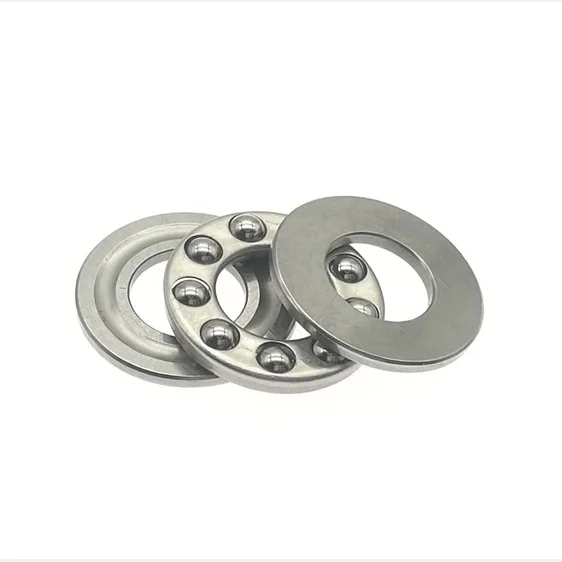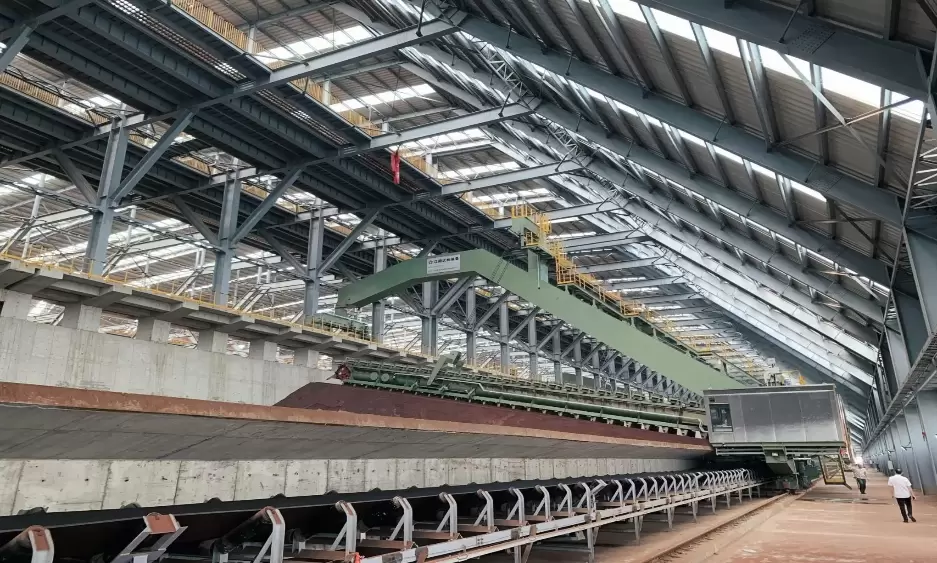Micro Thrust Bearings: Types and Applications

https://www.fertbearing.com/Micro-Thrust-Bearings-Types-and-Applications.html
In the realm of machinery, the evolution of micro thrust bearings has been a game-changer. These miniature components play a pivotal role in ensuring smooth rotational motion within various devices. Originating from the early 20th century, micro thrust bearings have continuously advanced to meet the growing demands of precision engineering. Today, these tiny yet mighty bearings are indispensable in applications ranging from aerospace technology to medical equipment, showcasing their versatility and reliability in modern industrial settings.

Key Takeaways
-
Properly understanding the basics of thrust bearings is crucial for selecting the right micro thrust bearing for your application.
-
Different types of miniature thrust bearings offer specific advantages and are suited for varying load capacities and speeds.
-
Adhering to temperature limits is essential to ensure optimal performance and longevity of micro thrust bearings.
-
Regularly lubricating micro thrust bearings according to the recommended guidelines can significantly extend their lifespan and efficiency.
-
When selecting a micro thrust bearing, consider factors like load capacity, speed requirements, and environmental conditions for the best performance.
-
Proper maintenance and care, including monitoring temperature limits and lubrication schedules, are key to maximizing the durability and functionality of micro thrust bearings.
Basics of Thrust Bearings
Purpose
Thrust bearings play a crucial role in supporting axial loads, ensuring smooth rotation in various applications. They are specifically designed to handle force parallel to the shaft's axis, known as axial thrust.
Micro thrust bearings are tailored for smaller shaft sizes, typically ranging from 2mm to 10mm. These bearings are crafted with precision to accommodate the limited space available in compact machinery and devices.
Design Features
-
Micro thrust bearings are often constructed using materials like chrome steel to enhance durability and performance.
-
They consist of components such as flat bearing washers and raceway grooves to facilitate proper load distribution and reduced friction torque.
-
The design includes bearings that aid in minimizing axial friction, allowing for efficient operation even in confined spaces.
Limitations
-
Despite their compact size, micro thrust bearings have limitations in terms of load capacity. They may not withstand heavy axial loads compared to larger counterparts.
-
Due to their smaller size, these bearings may have restrictions in handling high speeds, impacting their suitability for applications requiring rapid rotations.
Types of Miniature Thrust Bearings
Material Composition
Miniature thrust bearings, also known as miniature thrust ball bearings, are typically made of chrome steel. This material composition ensures durability and high performance in various applications.
Grooved Washers Distinction
Miniature thrust bearings differ from thrust bearings with grooved washers in their design and size. While traditional thrust bearings use grooved washers to accommodate axial loads, miniature thrust bearings are compact and suitable for applications requiring precise axial positioning.
Significance of Brass Cage
One key component that enhances the functionality of miniature thrust bearings is the brass cage. The brass cage provides stability and support to the bearing elements, ensuring smooth operation under heavy axial loads. It also helps maintain proper spacing between the rolling elements, contributing to overall bearing efficiency.
Temperature Limits for Optimal Performance
Lubrication Importance
Chrome steel thrust bearings operate optimally within specific temperature ranges. Lubricants play a crucial role in maintaining these temperatures. They reduce friction, ensuring the bearings function efficiently.
Impact on Load Capacity
Temperature directly affects the load capacity of chrome steel thrust bearings. Exceeding recommended temperatures can lead to decreased load capacity, affecting the bearing's ability to support high loads.
Maintenance Tips
-
Use suitable lubricants to maintain optimal temperatures.
-
Regularly monitor and control operating temperatures to prevent overheating.
Guide to Lubricating Micro Thrust Bearings
Suitable Lubrication Options
Dry lubricants are ideal for micro thrust bearings due to their ability to reduce friction without attracting dust. Greases can also be used for long-term lubrication, providing excellent protection against corrosion.
Relubricating Bearings
Internal bearing relubrication facility to ensure thorough cleaning and re-lubrication.
Extending Lifespan Tips
To extend the lifespan of micro thrust bearings, consider using hardened steel washers or nylon retainers for enhanced durability. Properly selecting flat or grooved washers can also help distribute loads evenly, reducing wear and tear.
-
Pros:
-
Enhanced performance through proper lubrication options.
-
In-house relubrication facility for convenience.
-
Cons:
-
Over-lubrication may lead to overheating and premature failure.
-
Incorrect lubricant choice can cause damage to the bearings.
Frequently Asked Questions
What are thrust bearings used for?
Thrust bearings are used to support axial loads in rotating machinery, ensuring smooth operation and reducing friction between moving parts.
How do miniature thrust bearings differ from standard thrust bearings?
Miniature thrust bearings are designed for applications with limited space and lower load capacities compared to standard thrust bearings, making them ideal for compact devices and precision instruments.
What temperature limits should be considered for optimal performance of micro thrust bearings?
Micro thrust bearings typically perform optimally within a temperature range of -20°C to 120°C, ensuring proper functioning and longevity under varying operating conditions.
Why is lubrication important for micro thrust bearings?
Lubrication is crucial for micro thrust bearings as it reduces friction, minimizes wear and tear, extends the bearing's lifespan, and ensures smooth operation in various industrial applications.
How often should micro thrust bearings be lubricated?
Micro thrust bearings should be lubricated regularly based on the manufacturer's recommendations or operating conditions, typically ranging from monthly to quarterly intervals to maintain optimal performance.
https://www.fertbearing.com/Thrust-Ball-Bearings
Vivi
feierte2017@163.com

